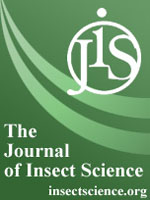The codling moth, Cydia pomonella (L.) (Lepidoptera: Tortricidae), is a primary pest of apples throughout the United States. Reliance on broad spectrum organophosphates has been declining with the slated cancellation and has shifted towards narrow spectrum insecticides. Novaluron, a chitin synthesis inhibitor, has primarily been used for its ovicidal and larvacidal activities. However, recent studies have demonstrated a transovarial effect after exposure to adults. The effects of novaluron were studied to determine if reduced egg hatch occurs after exposure of different sexes to this compound. Effects of this compound through horizontal transfer were also compared with a topical application to C. pomonella eggs. Results from independent exposure of different sexes to novaluron were different than the control for all three exposure types; male only, female only, and both treated. The horizontal transfer experiment yielded no significant difference while the topical application of novaluron on eggs showed significantly lower egg hatch. Although novaluron has no direct toxicity to adults, the results of this study demonstrate that the delayed lethal activity of this compound reduces hatching of eggs laid by treated adults. Along with the direct ovicidal and larvicidal properties of novaluron, the delayed lethal activity provides an important contribution to the overall control seen in the field.
How to translate text using browser tools
1 September 2011
Novaluron Causes Reduced Egg Hatch After Treating Adult Codling Moths, Cydia pomenella: Support for Transovarial Transfer
Soo-Hoon S. Kim,
John C. Wise,
Avhan Gökçe,
Mark E. Whalon

Journal of Insect Science
Vol. 11 • No. 126
September 2011
Vol. 11 • No. 126
September 2011
chitin synthesis inhibitor
horizontal transfer
transovarial transfer




